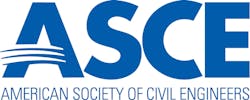In an ongoing effort to “close the infrastructure investment gap for America’s economic future,” the American Society of Civil Engineers (ASCE) has released new data related to its Failure to Act economic study. ASCE says the study “quantifies how the persistent failure to invest in our aging infrastructure impacts the economy, including GDP, jobs, personal disposable income, and business sales.”
As of September 2020, ASCE has issued updated reports for the water and electricity sectors — and published its preliminary findings for the surface transportation sector.
Based upon the most recent data available, the new report shows that current surface transportation system investment trends are unsustainable. ASCE states that “For many years, the nation’s surface transportation infrastructure has been underfunded and continues to experience deterioration, in both its condition and its capacity to perform.” ASCE says this “continued deterioration leaves a significant and mounting burden on the U.S. economy.”
The new findings are based on ASCE’s analysis of “the effect that transportation deficiencies have, and will continue to have, on U.S. economic performance.” The report analyzes two factors: what we are currently spending on roads and transit systems; and what we need to spend to return the systems to a state of good repair and provide efficient operation. The analysis then extends these trends out to 2039 to explore how underinvestment stands to impact everything from household income to our overall economic competitiveness.
The new ASCE data show that deficiencies in our nation’s critical transit systems, roads, and bridges have cascading impacts on the national economy. ASCE notes that “we are facing a funding gap of about $2.1 trillion between 2020 and 2039 with our current spending levels.”
The report concludes that “Should investment in our nation’s highways, bridges, and public transportation systems continue at current trend levels of capital spending, households and businesses will incur nearly $2 trillion dollars in extra costs cumulatively over the 20-year timeframe of this study.” And “if industry costs are passed onto customers, costs per household could be as high as $12,500 over 20 years, or $625 dollars per year.”
Read the Preliminary Findings Report here
The full report will be released later this year.



